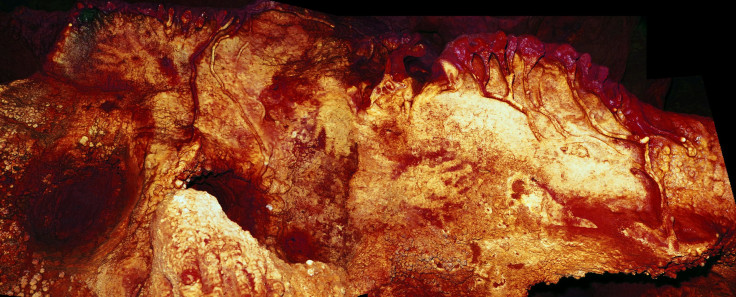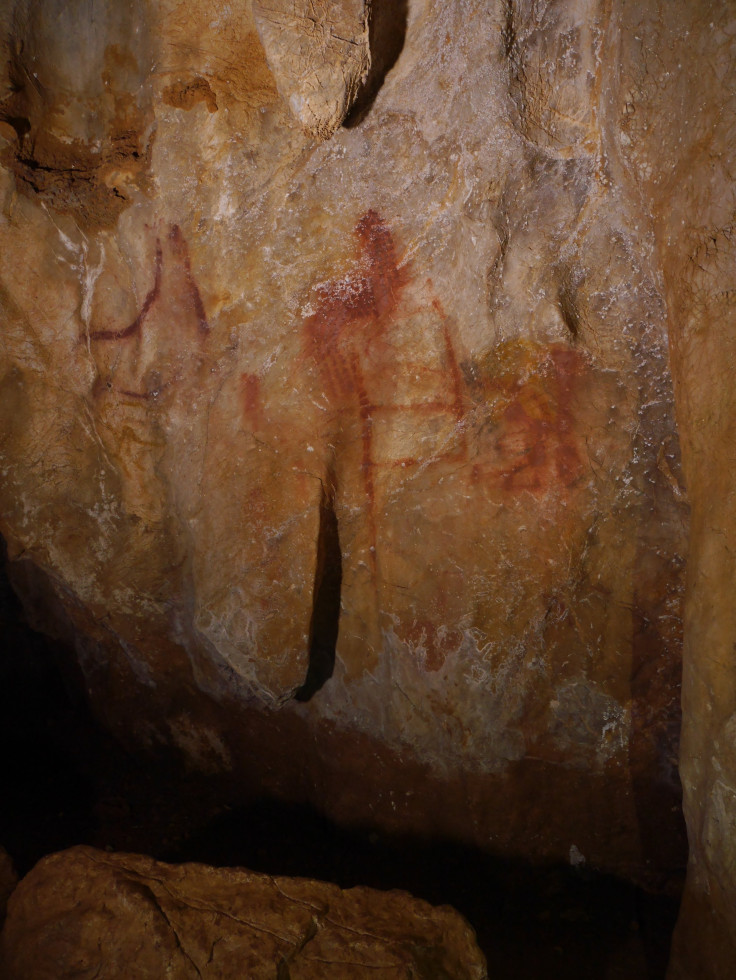Neanderthal Cave Art Predates Drawings By Modern Humans By 20,000 Years

The common depiction of Neanderthals in popular culture is usually that of a brutish, often ape-like, humanoid character who has a degree of outward resemblance to modern humans, but relies almost entirely on brawn, with very little brain power. Seeing those, it would be hard to imagine a Neanderthal holding a paintbrush while contemplating the next masterpiece to be drawn.
It wasn’t exactly like that, because paintbrushes didn’t exist then, but researchers have found Homo neanderthalensis produced art long before Homo sapiens — the “wise” modern humans — ever took it up. Based on evidence gathered from some sites in Spain, it was found our extinct cousins were painting on walls of caves at least 20,000 years before the earliest-known cave art by anatomically modern humans.
The earliest known art by Homo sapiens dates back to about 40,000 years ago, a time sometimes called the Upper Paleolithic Revolution. Other than cave art, objects like sculpted figures, decorated tools and jewelry made from a variety of materials — bone, ivory, tooth, shell and stone — have been found, made by modern humans as they spread out of Africa, and into Europe.
A team of European researchers used a method called uranium-thorium (U-Th) dating on three cave sites in Spain, and found that the color pigments date back to almost 65,000 years ago. The findings were published in a study that appeared online Friday in the journal Science.

“This is an incredibly exciting discovery which suggests Neanderthals were much more sophisticated than is popularly believed. Our results show that the paintings we dated are, by far, the oldest known cave art in the world, and were created at least 20,000 years before modern humans arrived in Europe from Africa — therefore they must have been painted by Neanderthals,” Chris Standish, an archaeologist at the University of Southampton in the United Kingdom, and joint lead author of the study, said in a statement Thursday.
The three cave sites were La Pasiega (northeastern Spain), Maltravieso (western Spain) and Ardales (southwestern Spain). All three caves contain red (ochre) or black paintings that show animals, geometric signs, stencils and prints of hands, as well as engravings.
There are other symbolic artefacts from further back in time that were discovered at another sea cave site in southeast Spain, Cueva de los Aviones. There, some of the same researchers involved in the other study found perforated sea shell, as well as red and yellow coloring material. There were also shell containers that contained mixed color pigments, evidence of a complex art culture. And U-Th dating showed them to be about 115,000 years old.
That predates even similar sites found in Africa where Home sapiens lived at the time, while Western Europe was occupied by Neanderthals.
“The emergence of symbolic material culture represents a fundamental threshold in the evolution of humankind. It is one of the main pillars of what makes us human. Artefacts whose functional value lies not so much in their practical but rather in their symbolic use are proxies for fundamental aspects of human cognition as we know it,” Dirk Hoffmann of the Max Planck Institute for Evolutionary Anthropology in Germany, who led both the studies, said in a statement Thursday.
The first study was titled “U-Th dating of carbonate crusts reveals Neandertal origin of Iberian cave art.” The second appeared online Thursday in the open-access journal Science Advances, under the title “Symbolic use of marine shells and mineral pigments by Iberian Neandertals 115,000 years ago.”
© Copyright IBTimes 2024. All rights reserved.





















